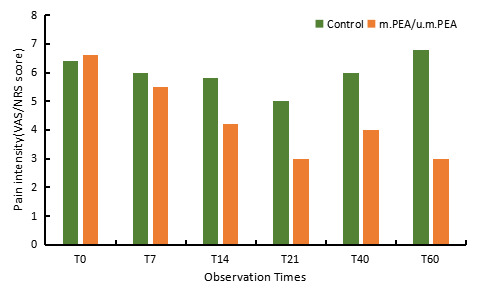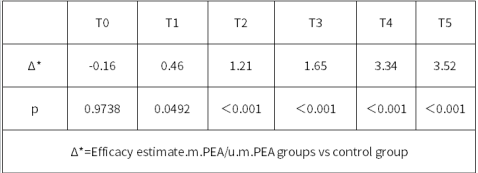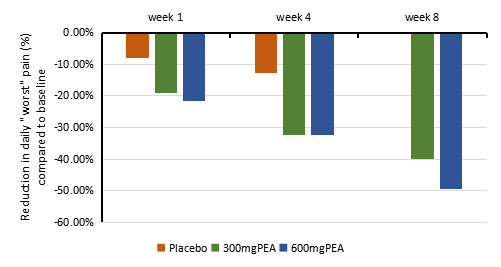Functional Food Ingredients Palmitoylethanolamide
Description
Palmitoylethanolamide (PEA) is a naturally occurring fatty acid compound that exists endogenously in animal and plant cells. In the human body, PEA is part of the expanded endocannabinoid family and acts as a protective and repair molecule, supporting the body's ability to repair itself and having anti-inflammatory and analgesic effects.
product information
Appearance: white crystalline powder
Purity: 99%
CAS NO.:544-31-0
Molecular formula:C
18H
37NO
2
Molecular weight: 299.49
Molecular structural formula:
Features
1.99% content, ensuring ultra-high purity and healthier for the human body;
2. No special odor, green production process, and the purification process does not involve organic solvents;
3. The product is prepared through the recrystallization process, and the product form and properties are stable;
4. The product has high safety and tolerance.
Benefits
1. Anti-inflammatory effect
PEA is produced by neurons and glial cells in the central nervous system. Studies have found that PEA increases CB2 mRNA and protein expression by activating peroxisome proliferator-activated receptor-α (PPAR-α), thereby achieving cell protection. and anti-inflammatory effects.
In a double-blind, placebo-controlled trial, 111 non-obese patients aged 38–76 years old with mild to moderate osteoarthritis were randomised to a daily dose of 300mg PEA, 600mg PEA, or placebo for 8 weeks in two separate doses with meals. Patients were only permitted paracetamol as a rescue medication, ceased use of all other osteoarthritis medications (pharmaceutical or complementary)
Pain, stiffness and function (assessed by WOMAC) improved in both PEA groups compared to placebo within 8 weeks (300mg PEA group p = 0.037, 600mg PEA group p = 0.001). Worst daily pain score measured by NRS reduced by 19.1% at week 1, 32.2% at week 4 and 40% by week 8 in the 300mg group. Pain score in the 600mg group was reduced by 21.5% at week 1, 32.2% at week 4 and 49.5% at week 8. Pain in the placebo group reduced by 12.7% at week 4 but returned to baseline at week 8. Pain reduction was significant in both the 300mg and 600mg groups (p < 0.001 for both)
Osteoarthritis pain reduced after PEA supplementation
[1]Steels E, Venkatesh R, Steels E, Vitetta G, Vitetta L. A double-blind randomized placebo controlled study assessing safety, tolerability and efficacy of palmitoylethanolamide for symptoms of knee osteoarthritis. Inflammopharmacology. 2019 Jun;27(3):475-485.
2.Relieve chronic pain
PEA is produced endogenously in all tissues on demand as a protective response to injury, inflammation, and pain, however, when pain persists for longer periods of time, PEA may become "fatigued," resulting in reduced PEA levels. Exogenous administration of PEA replenishes endogenous PEA levels and restores its protective, anti-inflammatory, and analgesic effects.
All observations on the intensity of pain relating to 1,484 patients were analyzed by repeated measures GLMM, using as descriptive variables: study type, baseline pain intensity, time, and treatment. The reduction in pain was present in both the PEA treated and control groups, and was significant over time (P< 0.0001). These reductions in pain were always in- fluenced by both the type of study (P < 0.0007) and baseline pain intensity (P < 0.0038). Pain reduction was more evident in the group treated with PEA compared to controls: the difference between the 2 groups was already significant at T1 (P < 0.05) and increased with continued treatment over time (P < 0.0001)


[2]Paladini A, Fusco M, Cenacchi T, Schievano C, Piroli A, Varrassi G. Palmitoylethanolamide, a Special Food for Medical Purposes, in the Treatment of Chronic Pain: A Pooled Data Meta-analysis. Pain Physician. 2016 Feb;19(2):11-24.


